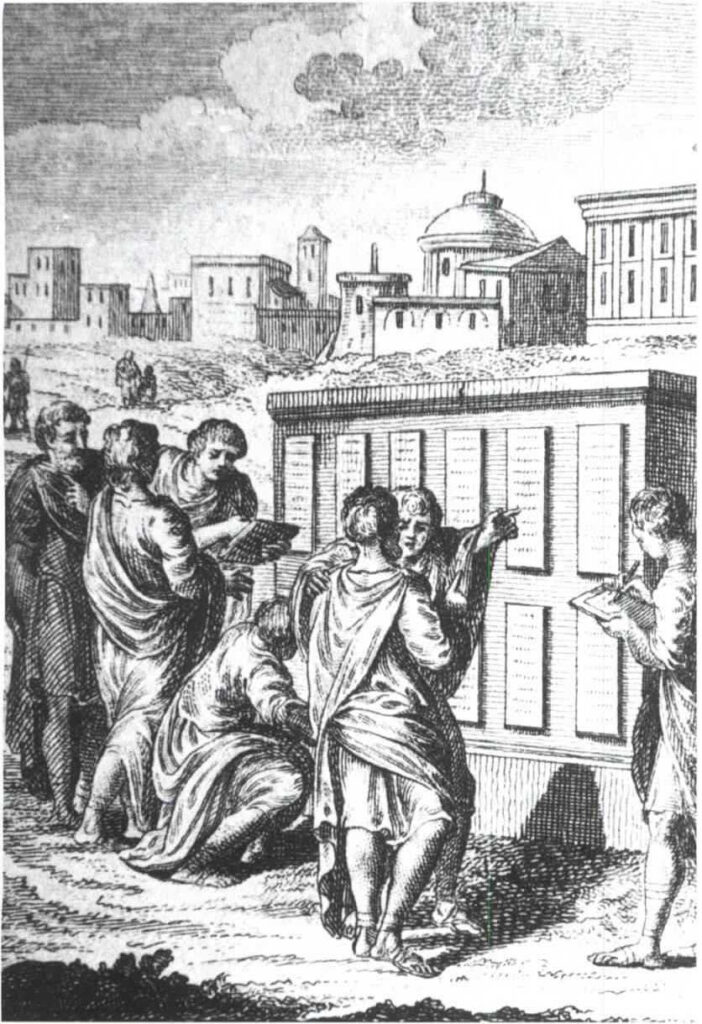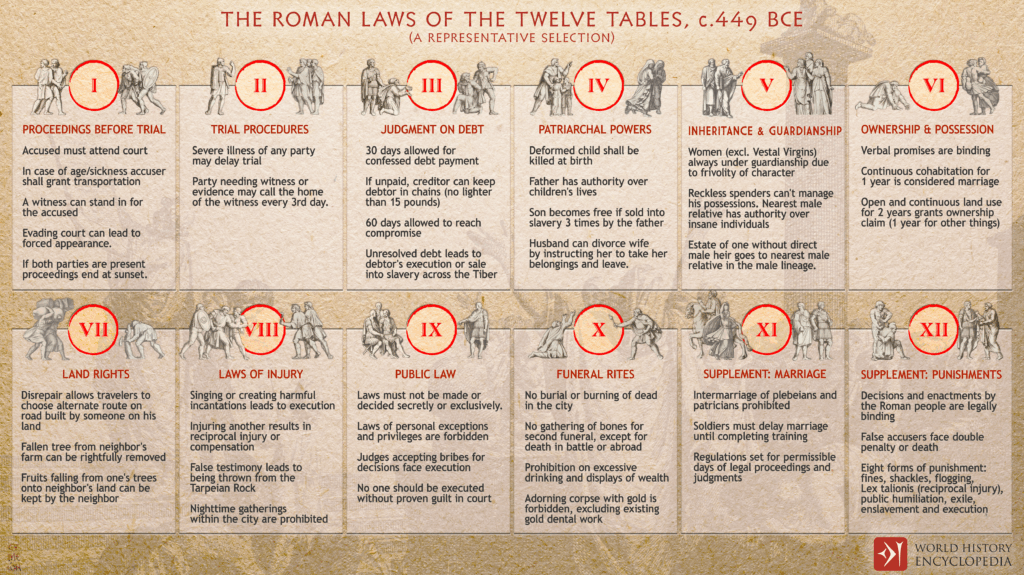The Law of the Twelve Tables, which originated in 451-450 BCE during the Roman Republic, is the oldest codification of Roman law. To ensure that every Roman citizen could see them and understand their legal rights and obligations, these laws were written on twelve bronze tablets and put on public display in the Roman Forum. Before their creation, legal decisions were typically controlled by the upper class—the patricians—leaving lower-class plebeians vulnerable to inconsistent and unfair treatment. The Twelve Tables established specific rules on matters such as trial procedures, debt repayment, legal representation, the authority of the male head of the household (paterfamilias), inheritance and land ownership, theft and assault, marriage and divorce, and others.
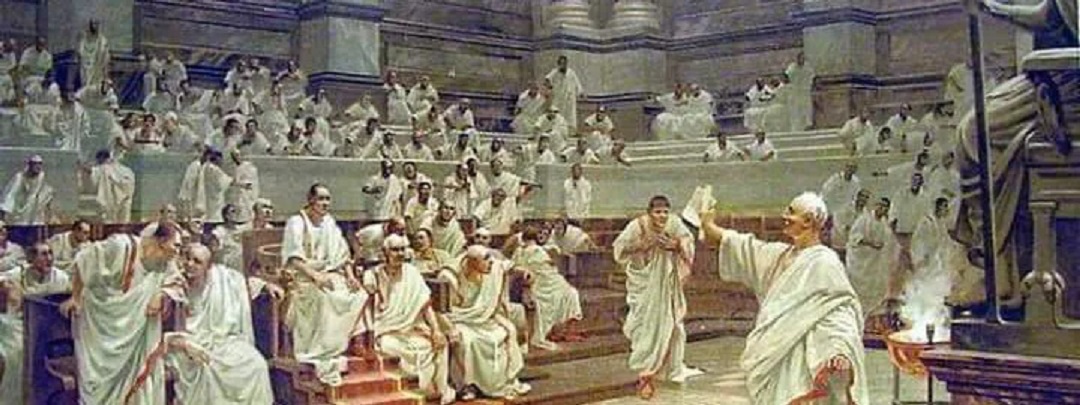
Historical significance
In addition to being the first written codification of Roman law, the Law of the Twelve Tables represented a revolution in transparency by making the laws publicly visible. Because the law was applied equally to both patricians and plebeians, it helped to lessen the inequality in legal power. Although there were still social divisions, this change was significant because it moved society from arbitrary rule to the rule of law, which is essential for societies moving from monarchy to republic. This codification represents a significant moment in Roman legal history, establishing the foundation for future legal systems and reforms.


Cause and consequences
Following King Lucius Tarquinius Superbus’s expulsion in 509 BCE, Rome progressively became a republic. The law was one of the main problems; it was unwritten and controlled by priests or the wealthy, making it unavailable to the general public. Frustration and growing tensions between patricians and plebeians led to the creation of a board of ten officials, known as the decemviri (“ten men”), who replaced all Roman magistrates in 451 BCE. The first decemvirate successfully organized the laws into ten “tables.” A new decemvirate was elected to complete the work, but it soon became tyrannical, seizing absolute power in Rome. The decemviri’s actions infuriated the Roman population and the Senate, but they were unable to overthrow them. The pivotal moment occurred when prominent decemvir Appius Claudius misused his position of authority to take Verginia, a young plebeian woman. Seeing no possibility of justice, her father decided to kill her instead of allowing her to end up in Appius’s hands. This tragic event was the final straw, prompting the plebeians to protest and organize a mass exodus from the city until their demands for reform were met. This is known as the Second Secession of the Plebs. The decemviri were overthrown, the law was changed, and two additional tables were added, granting significant rights and protections to the plebeians.
Continuity and change
Before the Roman Empire, laws were mostly founded on centuries-old, unwritten traditions that were frequently enforced by the aristocracy. With the creation of the Twelve Tables, laws were first codified and presented in public, marking a significant turning point in Roman history. This codification created a lasting tradition of written law by increasing legal transparency and beginning to transfer some power to the general populace, especially the plebeians. Over time, Roman law evolved and expanded in complexity, eventually culminating in the Corpus Juris Civilis under Emperor Justinian in the 6th century CE. Key principles from the Twelve Tables, like property rights, contracts, and trial procedures, shaped Roman rule for centuries and still influence modern legal systems in Europe and Latin America.
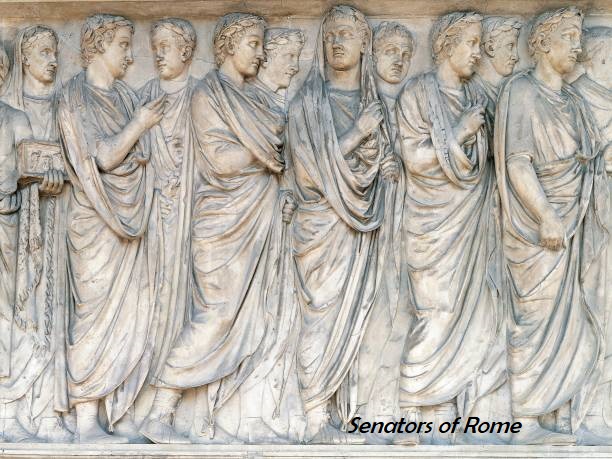
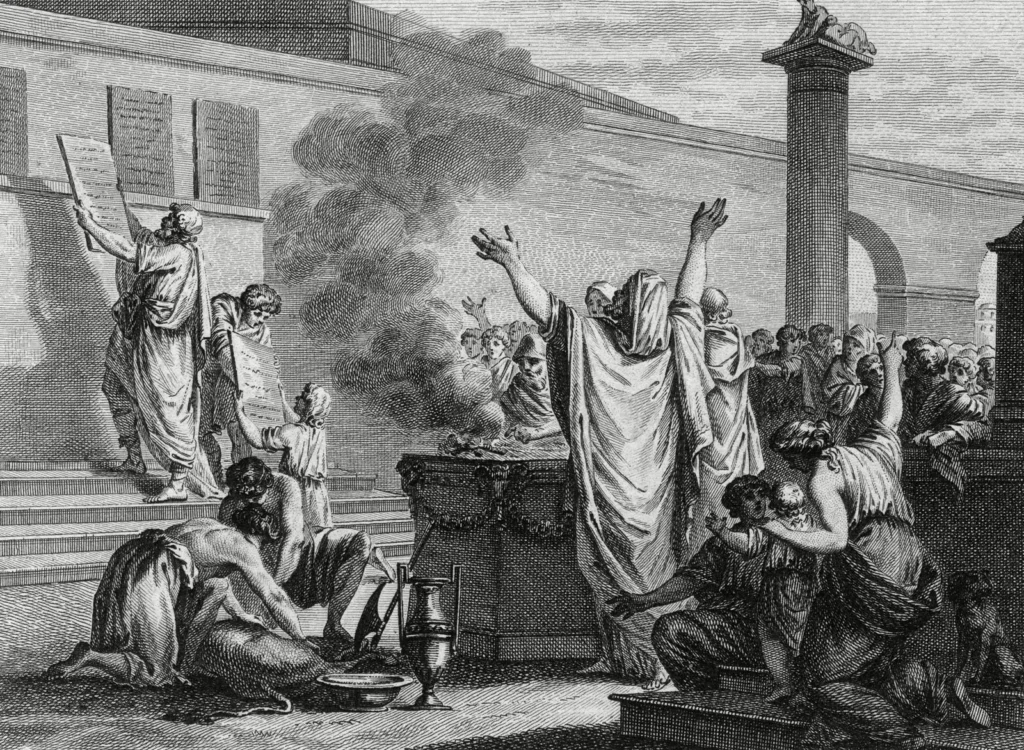
Historical Perspective
For the plebeians in the fifth century BCE, the Law of the Twelve Tables was a major victory in their struggle for rights and protection. The Twelve Tables allowed plebeians to defend themselves in court, demand fair trials, and understand their rights. It symbolized progress and justice, and offered protection against elite abuse. To patricians, it seemed like a necessary concession to preserve social order, maintain peace, and prevent rebellion. From a modern viewpoint, historians recognize the Twelve Tables as a foundational moment in the development of the rule of law. While some of the laws may now seem harsh or outdated (e.g., harsh punishments, patriarchal norms), they reflected the values and social structures of early Roman society.
